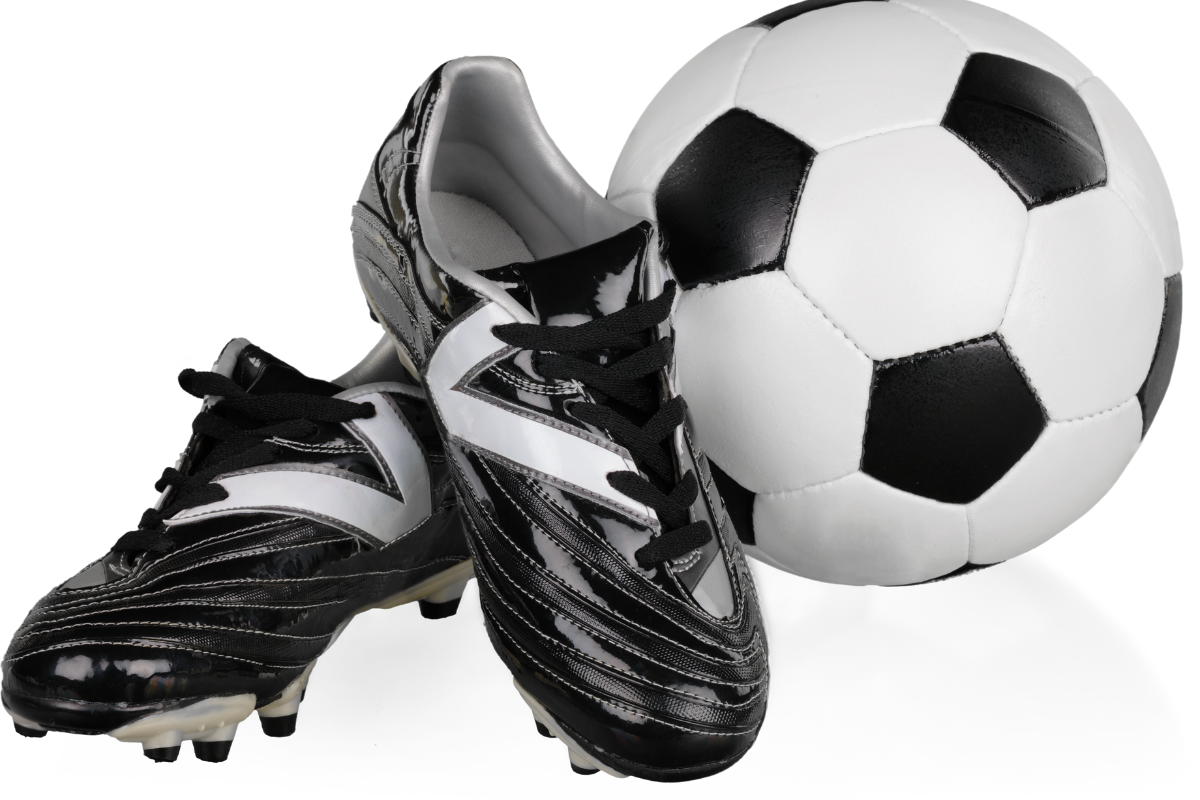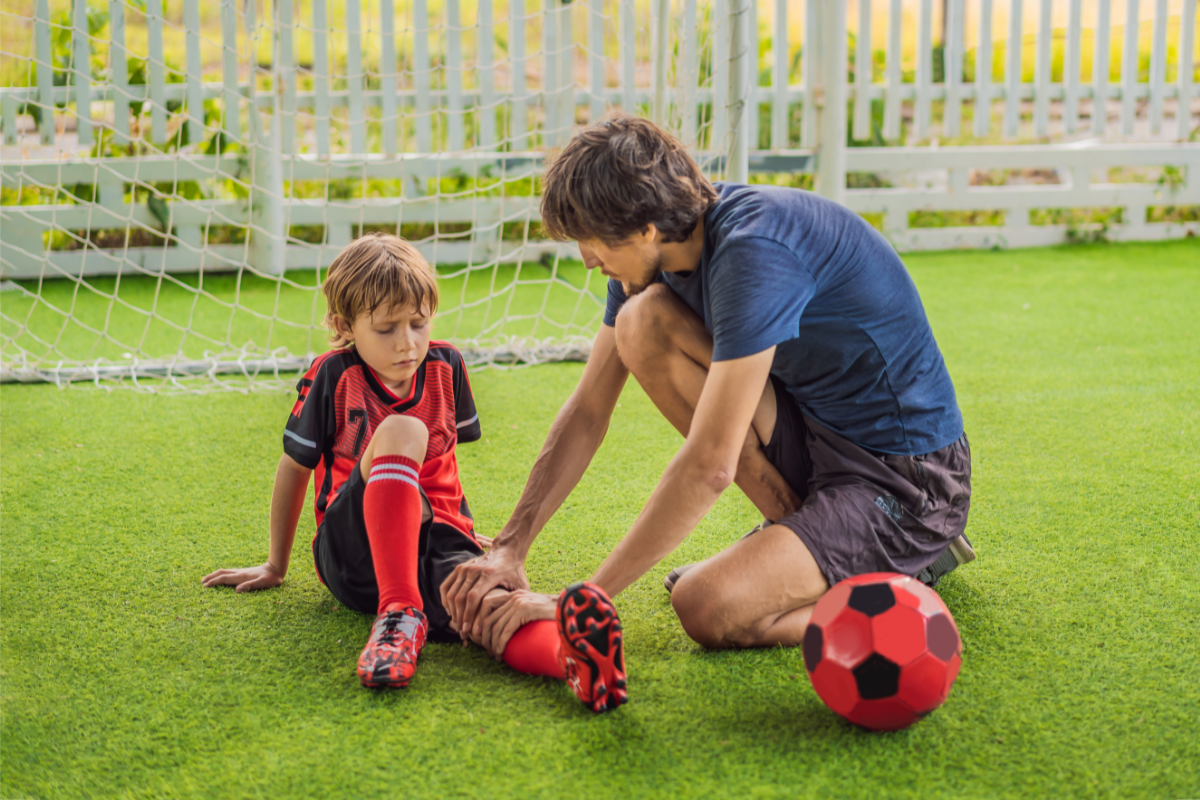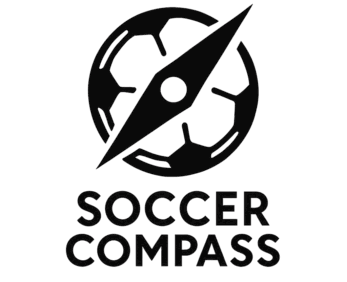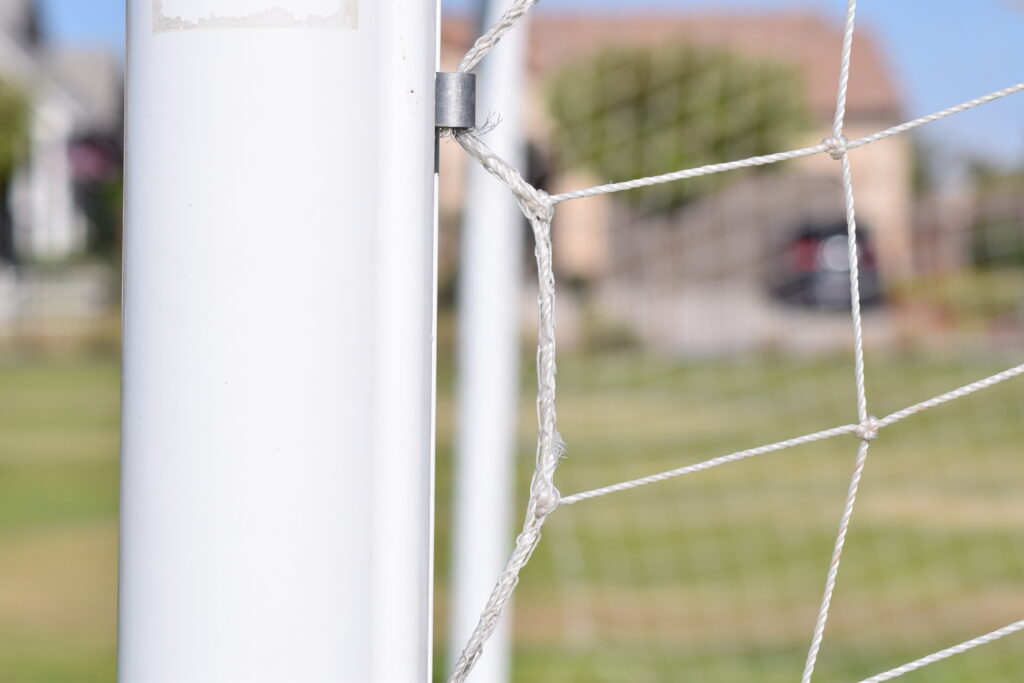The Complete Youth Soccer Guide for First-Time Parents: Everything You Need to Know in 2025
Are you feeling overwhelmed about starting your child’s soccer journey? This comprehensive youth soccer guide for parents is here to help you navigate every step with confidence divided in 13 chapters.

- Chapter 1: Understanding Youth Soccer Basics (What Every Parent Must Know)
- Chapter 2: Choosing the Right Soccer Program (The Decision That Changes Everything)
- Chapter 3: Essential Soccer Equipment Guide (Don’t Get Overwhelmed by Gear)
- Chapter 4: Soccer Rules Made Simple (Finally, Rules That Make Sense)
- Chapter 5: Soccer Positions Explained for Parents (No More Confusion)
- Chapter 6: What to Expect at Games and Practices (Your Survival Guide)
- Chapter 7: Supporting Your Young Soccer Player (The Game-Changer)
- Chapter 8: Soccer Development and Skills (The Roadmap to Success)
- Chapter 9: Soccer Safety and Injury Prevention (Protecting Your Young Athlete)
- Chapter 10: Building a Positive Soccer Community (The Hidden Benefits)
- Chapter 11: The Long-Term Soccer Journey (Managing Expectations)
- Chapter 12: Frequently Asked Questions (The Answers You Need)
- Your Soccer Journey Starts Here (The Most Important Chapter)
You’re not alone.
Thousands of parents face the same questions every season: Which youth soccer league is best? What equipment do I really need? How much will this cost?
But here’s the thing…
Finding the right information can transform confusion into confidence. This complete guide covers everything first-time soccer families need to know – from choosing the perfect league to understanding soccer positions, rules, and how to support your young athlete without burning out your family’s schedule or budget.
Whether you’re a complete beginner or just need clarity on youth soccer basics, this youth soccer guide for parents will give you the roadmap to navigate your child’s soccer journey successfully.
Quick Start Guide for New Soccer Parents
Before we dive deep, here’s what you need to know right now:
Ages 4-6: Focus on fun, basic soccer skills, and positive experiences
Ages 7-10: Learn soccer positions, basic rules, and team concepts
Ages 11-14: Consider competitive soccer options and advanced skill development
Equipment Essentials: Soccer cleats, shin guards, soccer ball, water bottle, and positive attitude
Sound simple enough?
Let’s break down exactly what that means for your family…
Chapter 1: Understanding Youth Soccer Basics (What Every Parent Must Know)
Here’s what might surprise you:
Youth soccer is completely different from the professional soccer you see on TV.
And that’s exactly the point.
Youth soccer prioritizes player development over winning, with modified soccer rules designed to maximize participation and skill building. Unlike professional soccer, youth soccer leagues emphasize equal playing time, smaller field sizes, and shorter game durations to match children’s attention spans and physical capabilities.
Key Differences That Matter to Parents:
Game Duration: Varies by age (20-90 minutes vs. 90 minutes professional)
Field Size: Smaller soccer fields for younger players
Team Size: Can range from 4v4 to 11v11 depending on age group
Substitutions: Unlimited substitutions encouraged
Offside Rule: Often modified or eliminated for younger ages
But here’s what you really need to understand about youth soccer age groups…
Youth Soccer Age Groups Explained (The System That Confuses Every Parent)
Understanding soccer age groups is crucial for first-time soccer parents. Most soccer leagues use birth year cutoffs, typically December 31st, to determine age divisions.

Typical Age Group Structure:
U6 (Under 6): Ages 4-5, focus on fun and basic ball skills
U8 (Under 8): Ages 6-7, introduction to team concepts
U10 (Under 10): Ages 8-9, basic positions and soccer rules
U12 (Under 12): Ages 10-11, full rules implementation
U14 and up: Ages 12+, competitive soccer play increases
Important Note: The “U” designation refers to the maximum age allowed in that division. A U10 player can be 8, 9, or 10 years old during the soccer year.
Now that you understand the basics…
Let’s talk about choosing the right soccer program for your child.
Chapter 2: Choosing the Right Soccer Program (The Decision That Changes Everything)
This is where most parents get stuck. Every comprehensive youth soccer guide for parents covers this critical decision because it impacts everything from your family’s schedule to your child’s development. Recreational vs. competitive vs. club soccer – what’s the difference? And more importantly, which one is right for your child?
Here’s the breakdown that will save you hours of research:
Recreational Soccer (Rec League) – The Perfect Starting Point
Best for: First-time players, ages 4-12, families wanting fun-focused experience
Characteristics:
- Equal playing time for all players
- Less practice commitment (1-2 times per week)
- Lower cost ($100-300 per season)
- Volunteer coaches (often parents)
- Emphasis on fun and participation
Pros: Affordable, low pressure, great introduction to soccer
Cons: Less skill development, inconsistent coaching quality
But what if your child shows real talent?
Competitive Soccer (Travel/Select) – The Next Level
Best for: Experienced players, ages 10+, families ready for higher commitment
Characteristics:
- Tryouts required
- More practice and games (3-4 times per week)
- Higher cost ($500-2000+ per season)
- Professional or experienced coaches
- Focus on winning and skill development
Pros: Better coaching, higher skill development, college recruitment opportunities
Cons: More expensive, time-intensive, can create pressure
And then there’s the elite level…
Club Soccer – The Serious Commitment
Best for: Serious players, ages 8+, families committed to youth soccer development
Characteristics:
- Year-round commitment
- Professional coaching staff
- Highest cost ($1500-5000+ per year)
- Travel to tournaments
- College recruitment focus
Pros: Elite-level development, professional coaching, college opportunities
Cons: Very expensive, extremely time-intensive, high pressure

So how do you choose?
How to Choose the Right Soccer Program for Your Child
Ask these critical questions:
- What does your child want? (Fun vs. competition)
- What’s your family’s time commitment capacity?
- What’s your budget for youth soccer?
- How experienced is your child with soccer?
- What are your long-term goals?
Red Flags to Avoid:
- Coaches who emphasize winning over development in young players
- Programs that require expensive additional training
- Teams that don’t provide equal playing time at recreational levels
- Soccer clubs with poor communication or disorganized operations
Speaking of getting organized…
Let’s talk about the soccer equipment your child actually needs.
Chapter 3: Essential Soccer Equipment Guide (Don’t Get Overwhelmed by Gear)
Here’s the truth about youth soccer equipment:
You don’t need to spend a fortune.
In fact, starting simple is usually the smartest approach. But here’s what separates smart soccer parents from overwhelmed ones: Having a reliable youth soccer guide for parents that breaks down exactly what’s essential versus what’s just marketing hype.
Here’s what every young soccer player actually needs:
Most comprehensive youth soccer guide for parents resources agree on these fundamentals, and for good reason – they focus on safety, development, and budget-friendly choices.
The reality is: Every quality youth soccer guide for parents emphasizes starting with the basics and upgrading gradually as your child’s interest and skill level develop.
Must-Have Soccer Gear for Beginners
Soccer Cleats
- Why they matter: Proper traction and ball control
- What to buy: Firm ground (FG) cleats for most fields
- Budget: $35-75 for quality youth cleats
- Sizing tip: Leave thumb-width space for growth
Shin Guards
- Why they’re required: Protection from kicks and ball impact
- What to buy: Slip-in style for younger players, ankle guards for older
- Budget: $15-40 for good protection
- Fit tip: Should extend from ankle to below knee
Soccer Ball
- Why you need one: Practice at home improves skills dramatically
- What to buy: Size 3 (ages 8 and under), Size 4 (ages 9-12), Size 5 (ages 13+)
- Budget: $20-40 for quality ball
- Pro tip: Buy two – one for games, one for backyard practice
Soccer Socks
- Why they matter: Go over shin guards, prevent blisters
- What to buy: Crew or knee-high soccer-specific socks
- Budget: $10-20 per pair
- Care tip: Buy 2-3 pairs for weekly washing
But what about all the other soccer gear you see?

Optional Equipment That Can Help
Soccer Bag: Keeps everything organized ($25-50)
Water Bottle: Hydration is crucial ($10-20)
Practice Cones: For backyard training ($15-25)
Goalkeeper Gloves: If your child wants to play goalie ($20-50)
Equipment Buying Tips for Soccer Parents
- Start Simple: Don’t over-invest until you know your child loves soccer
- Buy for Current Size: Avoid buying equipment too large “to grow into”
- Check League Requirements: Some soccer leagues have specific equipment rules
- Quality vs. Price: Mid-range equipment offers best value for beginners
- Hand-Me-Downs: Cleats and shin guards can be bought used safely
Now that you’re equipped…
Let’s decode the soccer rules that matter most to parents.
Chapter 4: Soccer Rules Made Simple (Finally, Rules That Make Sense)
Here’s what every soccer parent dreads:
Standing on the sideline with no clue what’s happening on the field.
But here’s the good news: Understanding basic soccer rules isn’t as complicated as it seems, and every effective youth soccer guide for parents starts with these fundamentals because they transform your entire game-day experience.
The truth is: When you know the rules, you can follow games confidently, answer your child’s questions, and actually enjoy watching their development on the field.
Here’s what separates confident soccer parents from confused ones: A solid youth soccer guide for parents that breaks down the essential rules in plain English, without the overwhelming technical jargon that makes most rulebooks impossible to understand.
Most importantly: Every comprehensive youth soccer guide for parents emphasizes that you don’t need to memorize every rule – just understanding the basics will make you a more supportive and informed soccer parent.
Basic Soccer Rules Every Parent Should Know
The Field and Players
- Field: Rectangular with goals at each end
- Players: 11 per team (fewer for younger ages)
- Positions: Goalkeeper, defenders, midfielders, forwards
- Game Time: Two halves (duration varies by age)
Basic Rule Violations
Out of Bounds:
- Throw-in: When ball crosses sideline, opposing team throws ball back in
- Corner Kick: When defending team last touches ball before it crosses goal line
- Goal Kick: When attacking team last touches ball before it crosses goal line
Fouls and Misconduct:
- Kicking, pushing, or holding opponents
- Dangerous play
- Results in: Free kicks, penalty kicks, or yellow/red cards
Offside Rule (Simplified):
- Player can’t be closer to goal line than second-to-last opponent when ball is played by teammate
- Only applies in attacking half of field
- Often modified or eliminated in youth soccer
But here’s where it gets interesting…
Age-Specific Rule Modifications
Youth soccer modifies rules to enhance development and enjoyment:
From Ages 4-6 (U6):
- No goalkeepers
- No offside
- Everyone plays, frequent substitutions
- Smaller goals and fields
Ages 7-8 (U8):
- Small-sided games (7v7 or 9v9)
- Shorter halves (20-25 minutes)
- Build-out lines for goalkeeper distribution
- No headers (in some leagues)
From Ages 9-12 (U10-U12):
- Transition to full rules
- Full-size goals and fields (or close)
- Offside rule introduced
- Standard substitution rules
Speaking of positions…
Let’s break down what each soccer position actually does.
Chapter 5: Soccer Positions Explained for Parents (No More Confusion)
Ever wonder what your child is supposed to be doing out there?
Understanding youth soccer positions helps you understand your child’s role and development areas.
And here’s the surprising part:
Young players shouldn’t specialize in one position too early.
Understanding Youth Soccer Positions
Goalkeeper (Goalie)
- Role: Prevent goals, distribute ball to teammates
- Skills: Hand-eye coordination, bravery, communication
- Parent tip: Goalkeepers need different equipment (gloves) and mindset
Defenders
- Role: Stop opposing attacks, pass to midfielders
- Skills: Tackling, heading, positioning, passing
- Types: Center backs (middle), fullbacks (sides)
- Parent tip: Defenders need patience and tactical understanding
Midfielders
- Role: Connect defense and attack, control game tempo
- Skills: Passing, running, ball control, vision
- Types: Defensive, attacking, and central midfielders
- Parent tip: Midfielders run the most and need excellent fitness
Forwards/Strikers
- Role: Score goals, create scoring opportunities
- Skills: Shooting, speed, ball control, positioning
- Types: Center forwards, wingers
- Parent tip: Forwards need confidence and shouldn’t fear making mistakes
But should your child stick to one position?
Should Young Players Specialize in One Position?
Ages 4-10: Players should try all positions, including goalkeeper
Ages 11-14: Can begin developing position preferences
High School+: Specialization becomes more important
Benefits of Position Rotation:
- Develops well-rounded skills
- Prevents early burnout
- Helps players understand game better
- Identifies natural talents
Now that you understand positions…
Let’s prepare you for what actually happens at practices and games.
Chapter 6: What to Expect at Games and Practices (Your Survival Guide)
Your first soccer practice is approaching…
And you have no idea what to expect.
Here’s your complete guide to soccer practices and games:
Your First Soccer Practice
Knowing what to expect reduces anxiety for both parents and players.
Typical Practice Structure (60-90 minutes):
- Warm-up (10-15 minutes): Light running, stretching
- Ball Skills (20-30 minutes): Dribbling, passing, shooting
- Small-Sided Games (20-30 minutes): 3v3, 4v4 scrimmages
- Cool-down (5-10 minutes): Light activity, team talk
What to Bring:
- Water bottle (most important!)
- Soccer ball
- Appropriate clothing for weather
- Positive attitude
Parent Expectations:
- Arrive 10-15 minutes early
- Stay for entire practice
- Let coaches coach
- Encourage effort over results
But game day is different…
Game Day Guide for New Soccer Parents

Pre-Game (30-60 minutes before):
- Arrive early for warm-ups
- Ensure proper equipment
- Light snack 1-2 hours before game
- Positive encouragement
During the Game:
- Cheer for both teams
- Focus on effort, not results
- Let coaches make tactical decisions
- Enjoy watching your child play
Post-Game:
- Win or lose, focus on fun and effort
- Avoid immediate game analysis
- Celebrate participation
- Plan recovery (hydration, rest)
And here’s what every parent needs to know about sideline behavior…
Sideline Etiquette for Soccer Parents
Do:
- Cheer positively for all players
- Support the referee’s decisions
- Encourage good sportsmanship
- Focus on fun and development
Don’t:
- Coach from the sidelines
- Criticize referees or other players
- Emphasize winning over participation
- Create pressure or negative emotions
Now let’s talk about the most important part…
Supporting your young soccer player the right way.
Chapter 7: Supporting Your Young Soccer Player (The Game-Changer)
Here’s what might shock you:
Your attitude as a parent impacts your child’s soccer experience more than their natural talent.
That’s right – you have more influence over their success and enjoyment than their athletic ability.
So how do you get it right?
How to Be a Supportive Soccer Parent
The Right Mindset
Focus on Development, Not Results:
- Celebrate improved skills over winning
- Recognize effort and attitude
- Understand that mistakes are learning opportunities
- Emphasize fun and friendship
Long-term Perspective:
- Youth soccer is about building character
- Skills develop over years, not games
- Social benefits often outweigh soccer skills
- Academic achievement remains the priority
But communication is key…
Communication Strategies
With Your Child:
- Ask about fun moments, not just performance
- Listen more than you advise
- Respect their feelings about wins and losses
- Support their decisions about continuing soccer
With Coaches:
- Introduce yourself and your child
- Ask about development goals
- Respect coaching decisions during games
- Schedule separate time for serious concerns
Sample Questions for Your Child:
- “What was the most fun part of practice/game today?”
- “What new skill are you working on?”
- “How are you getting along with your teammates?”
- “Is there anything about soccer you’d like to work on?”
Dealing with Common Youth Soccer Challenges
When Your Child Wants to Quit
Common Reasons:
- Not having fun anymore
- Feeling pressure to perform
- Social issues with teammates
- Preferring other activities
How to Handle:
- Listen without immediately problem-solving
- Identify specific issues
- Talk with coaches if appropriate
- Consider taking a break vs. permanent quitting
- Respect their decision if it’s truly what they want
Handling Playing Time Concerns
Remember:
- Equal playing time is standard in recreational leagues
- Competitive teams may have different policies
- Focus on your child’s development, not comparisons
- Communicate concerns respectfully with coaches
Managing Soccer-Related Expenses
Budget-Friendly Tips:
- Start with recreational leagues
- Buy used equipment when possible
- Carpool to reduce travel costs
- Look for scholarship opportunities
- Remember that expensive doesn’t always mean better
Speaking of development…
Let’s talk about the soccer skills your child should be learning.
Chapter 8: Soccer Development and Skills (The Roadmap to Success)
Want to know something interesting?

The soccer skills your child develops at age 8 are completely different from what they need at age 14.
Understanding this progression helps you support your child’s growth and set appropriate expectations.
Key Skills Young Players Should Develop
Fundamental Skills by Age
From Ages 4-6:
- Basic ball familiarity
- Running with the ball
- Kicking with both feet
- Following simple instructions
- Having fun with teammates
Ages 7-9:
- Improved ball control
- Basic passing and receiving
- Simple shooting technique
- Understanding positions
- Following game rules
From Ages 10-12:
- More complex ball skills
- Tactical awareness
- Consistent passing accuracy
- Defensive concepts
- Leadership development
But here’s what you can do at home…
Skills You Can Practice at Home
Ball Control:
- Juggling (keeping ball in air with feet)
- Cone dribbling in the backyard
- Wall passing practice
- First touch improvement
Physical Development:
- Running and general fitness
- Balance and coordination exercises
- Agility ladder work
- Core strength activities
Mental Development:
- Watching soccer games together
- Discussing strategy and positions
- Building confidence through encouragement
- Teaching good sportsmanship
When to Consider Additional Training
Signs Your Child Might Benefit from Extra Training:
- Expresses strong interest in improving
- Shows natural talent and enjoyment
- Wants to play at higher competitive levels
- Asks for additional practice opportunities
Types of Additional Training:
- Private coaching sessions
- Soccer camps during breaks
- Futsal (indoor soccer) leagues
- Technical skills clinics
Important Considerations:
- Don’t force additional training
- Ensure it remains fun
- Balance with other activities
- Monitor for signs of burnout
Now let’s address something crucial…
Soccer safety and injury prevention.
Chapter 9: Soccer Safety and Injury Prevention (Protecting Your Young Athlete)
Here’s what every soccer parent worries about:
Will my child get hurt playing soccer?
The good news is that soccer is relatively safe compared to other youth sports. But understanding common injuries and prevention strategies gives you peace of mind.
Common Soccer Injuries and Prevention
Most Common Youth Soccer Injuries:

- Ankle sprains – proper cleats and field conditions
- Knee injuries – strength training and proper technique
- Concussions – proper heading technique and awareness
- Muscle strains – adequate warm-up and conditioning
- Cuts and bruises – proper shin guard use
Prevention Strategies:
- Ensure proper equipment fit
- Emphasize good technique over power
- Maintain adequate fitness levels
- Follow proper warm-up and cool-down routines
- Stay hydrated in all weather conditions
But weather can be a factor…
Weather Considerations
Hot Weather Safety:
- Multiple water breaks
- Light-colored, breathable clothing
- Recognize heat exhaustion signs
- Adjust practice intensity
- Cancel activities in extreme heat
Cold Weather Precautions:
- Layer clothing appropriately
- Extend warm-up periods
- Watch for hypothermia signs
- Ensure proper field conditions
- Have emergency plans
Concussion Awareness for Soccer Parents
Concussion Signs:
- Headache or dizziness
- Confusion or memory problems
- Nausea or vomiting
- Sensitivity to light or noise
- Changes in behavior or mood
Important Protocol:
- Remove player immediately if concussion suspected
- Seek medical evaluation
- Follow return-to-play protocols
- Never ignore head injury symptoms
- Educate your child about reporting symptoms
Safety covered, let’s talk about something equally important…
Building a positive soccer community.
Chapter 10: Building a Positive Soccer Community (The Hidden Benefits)
Here’s something many parents don’t expect:
The friendships and community connections you build through youth soccer often last longer than your child’s playing career.
And that’s actually one of the best parts.
Creating Lasting Friendships Through Soccer
For Your Child
Encouraging Friendships:
- Arrange carpools with other families
- Organize team bonding activities
- Teach inclusive behavior
- Support teammates during difficulties
- Celebrate others’ successes
Building Team Chemistry:
- Participate in team events
- Support fundraising activities
- Volunteer for team responsibilities
- Encourage positive communication
- Model good sportsmanship
For Parents
Building Your Soccer Community:
- Introduce yourself to other parents
- Offer help with transportation or logistics
- Participate in team meetings and events
- Share resources and information
- Create group chats for coordination
Supporting Other Families:
- Offer encouragement during tough games
- Help with carpooling arrangements
- Share knowledge with newer families
- Volunteer for team activities
- Celebrate milestones together
Working Effectively with Coaches
Building Positive Relationships:
- Show appreciation for volunteer coaches
- Offer help with equipment or logistics
- Support coaching decisions publicly
- Address concerns privately and respectfully
- Remember coaches are learning too
Communication Best Practices:
- Schedule specific times for discussions
- Focus on your child’s development
- Ask how you can support team goals
- Provide constructive feedback when appropriate
- Remember the coach’s perspective
Now let’s talk about the big picture…
The long-term soccer journey.
Chapter 11: The Long-Term Soccer Journey (Managing Expectations)
Here’s the reality check every soccer parent needs:
Only about 2% of high school players play college soccer.
But that doesn’t mean youth soccer isn’t worth it.
In fact, the life skills and experiences gained through youth soccer are often more valuable than any scholarship or professional opportunity.
Setting Realistic Expectations
Development Timeline
From Ages 4-8: Foundation Building
- Focus on fun and basic skills
- Develop love for the game
- Learn teamwork basics
- Build confidence through participation
Ages 9-12: Skill Development
- Refine technical abilities
- Understand tactical concepts
- Develop competitive spirit
- Begin position specialization
From Ages 13-18: Advanced Development
- Master complex skills
- Understand advanced tactics
- Develop leadership qualities
- Consider college recruitment
Realistic Goals by Age
Early Years (4-10):
- Having fun and wanting to continue
- Learning basic skills and rules
- Making friends and being a good teammate
- Developing physical coordination
Middle Years (11-14):
- Showing consistent improvement
- Understanding game strategy
- Demonstrating leadership
- Balancing soccer with academics
High School Years (15-18):
- Playing at appropriate competitive level
- Contributing to team success
- Maintaining academic excellence
- Preparing for post-high school decisions
College Soccer and Beyond
College Soccer Reality:
- Only about 2% of high school players play college soccer
- Academic performance is crucial for college recruitment
- Division III schools offer excellent soccer without athletic scholarships
- Many successful people played recreational soccer
Life Skills from Soccer:
- Teamwork and collaboration
- Goal-setting and achievement
- Handling success and failure
- Time management
- Physical fitness habits
- Leadership development
But you probably still have questions…
Let’s address the most common ones.
Chapter 12: Frequently Asked Questions (The Answers You Need)
Every soccer parent has these questions.
Here are the honest answers:
“How do I know if my child is ready for soccer?”
Signs of Readiness:
- Can follow simple instructions
- Shows interest in running and physical activity
- Enjoys playing with other children
- Can handle being away from parents for short periods
- Shows basic coordination skills
Age Considerations:
- Most programs start at age 4-5
- Earlier start doesn’t guarantee future success
- Focus on fun and social development
- Let your child’s interest guide timing
“What if my child isn’t naturally athletic?”
Remember:
- Soccer skills can be developed through practice
- Many successful players weren’t naturally gifted
- Focus on effort and improvement, not comparison
- Consider your child’s enjoyment over performance
- Athletic ability develops at different rates
“How much should soccer cost?”
Typical Expenses:
- Recreational League: $100-300 per season
- Equipment: $150-300 initially
- Travel/Competitive: $500-2000+ per season
- Club Soccer: $1500-5000+ annually
Money-Saving Tips:
- Start with recreational leagues
- Buy used equipment when possible
- Look for scholarship opportunities
- Share transportation costs
- Focus on development over expensive programs
“Should my child play other sports too?”
Benefits of Multi-Sport Participation:
- Develops different muscle groups
- Prevents burnout and overuse injuries
- Builds diverse athletic skills
- Provides social variety
- Reduces pressure on single sport success
Recommended Approach:
- Encourage multiple sports until high school
- Let seasonal sports complement each other
- Avoid year-round single sport focus
- Balance athletic and non-athletic activities
“When should I consider private coaching?”
Consider Private Coaching When:
- Your child expresses strong interest in improvement
- They’re preparing for competitive team tryouts
- Specific skills need focused attention
- Group coaching isn’t meeting their needs
- They want to accelerate development
Important Considerations:
- Ensure it remains fun and pressure-free
- Private coaching is expensive but not always necessary
- Group training often provides better value
- Focus on finding quality instruction over quantity
Your Soccer Journey Starts Here (The Most Important Chapter)
Starting your child’s soccer journey as a first-time parent can feel overwhelming…
But remember this:
Millions of families have successfully navigated this path. The most important elements are maintaining perspective, supporting your child’s enjoyment of the game, and building positive relationships within the soccer community.
Key Takeaways for Soccer Parents
Priority #1: Fun First
If your child isn’t having fun, everything else becomes irrelevant. Protect their joy in playing soccer above all other considerations.
Development Takes Time
Soccer skills develop over years, not weeks or months. Celebrate small improvements and maintain long-term perspective.
Your Role is Support, Not Coaching
Be your child’s biggest cheerleader and emotional support system. Leave the technical coaching to the coaches.
Community Matters
The relationships you build through soccer often last longer than your child’s playing career. Invest in building positive connections.
Balance is Essential
Soccer should enhance your child’s life, not consume it. Maintain balance with academics, family time, and other interests.
Next Steps for New Soccer Families
- Research local programs that match your child’s age and your family’s goals
- Purchase basic equipment – cleats, shin guards, ball, and appropriate clothing
- Attend a practice or game to observe before committing
- Connect with other soccer families for advice and community
- Remember to have fun and enjoy this special time in your child’s development
Resources for Continued Learning
National Organizations:
- US Youth Soccer Association (USYSA)
- American Youth Soccer Organization (AYSO)
- Soccer Association for Youth (SAY)
Educational Resources:
- US Soccer coaching education materials
- Positive Coaching Alliance resources
- Local soccer association websites
Equipment Resources:
- Local sporting goods stores
- Online soccer specialty retailers
- Team equipment coordinators
- Other soccer families for used gear
The Beautiful Game Awaits Your Family
Remember this above all else:
Every soccer superstar started exactly where your child is starting now – with curiosity, enthusiasm, and supportive parents cheering them on.
Your journey in youth soccer is just beginning, and the lessons learned, friendships made, and memories created will last far beyond your child’s playing days.
The beautiful game welcomes your family.
Enjoy every moment of this incredible adventure.
Ready to take the next step in your soccer journey? Check out our guides on choosing the right soccer cleats for kids and stay tuned for posts about essential soccer drills for beginners, and understanding youth soccer positions to continue supporting your young athlete’s development.

